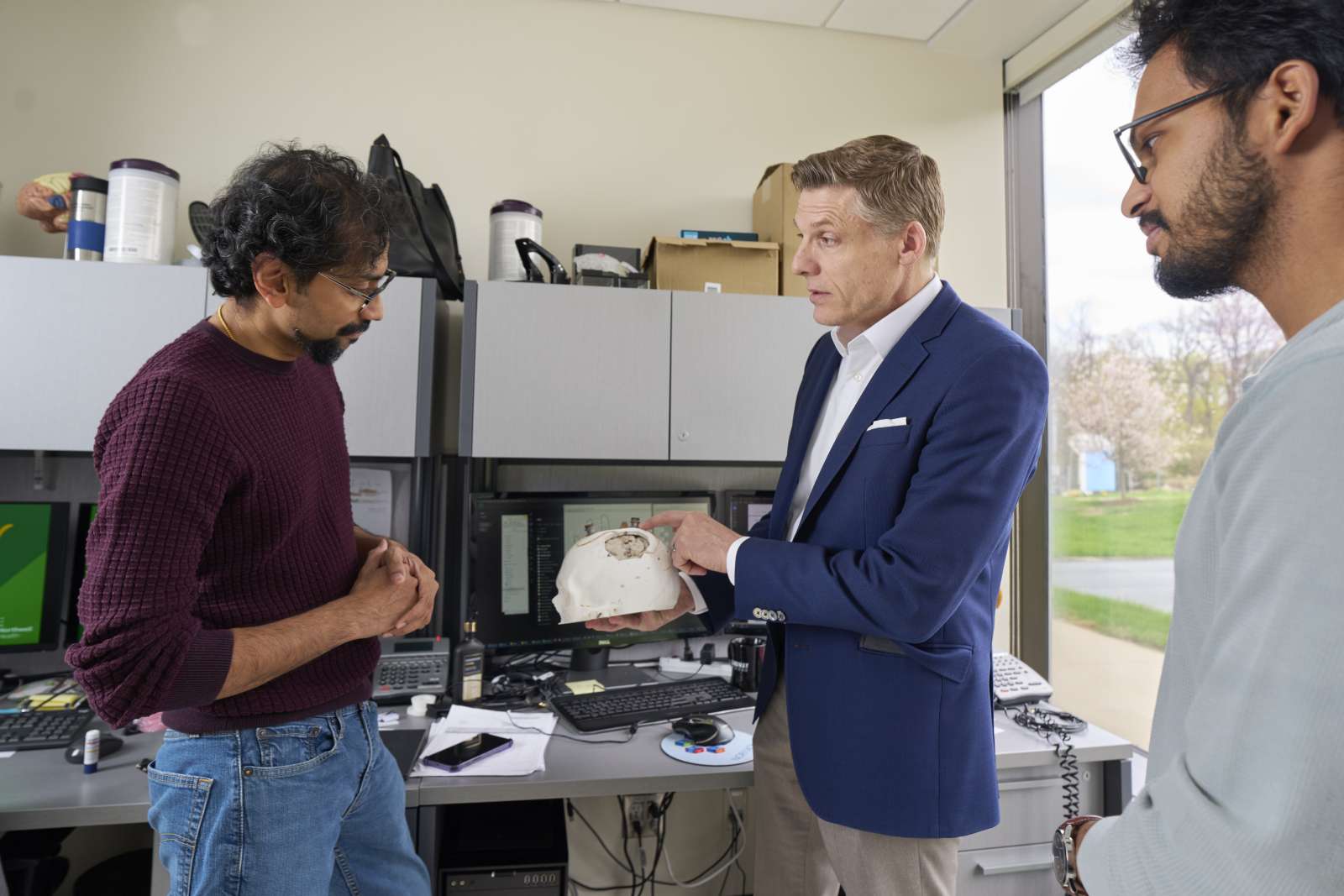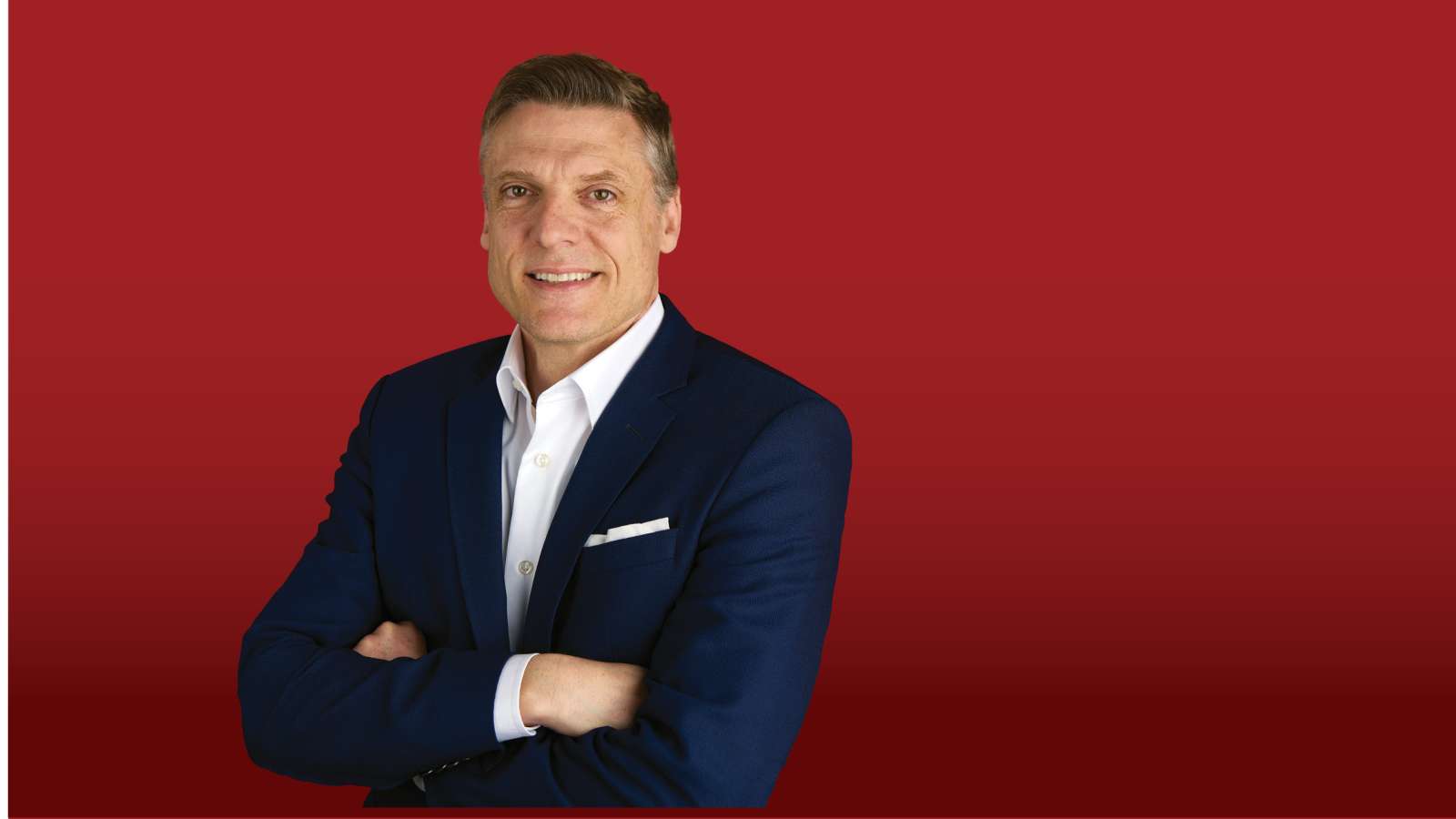Chad Bouton was 26 and a graduate student when he was assaulted while out one evening with friends. The assailant threw Bouton to the ground, slamming his head into the concrete. The impact fractured his skull and left him with a pair of dangerous subdural hematomas.
“I was rushed to Des Moines, and the neurosurgeon had to do two lifesaving surgeries during the night,” Bouton (’93, ’96) says. “I’m extremely lucky.”
His recovery lasted several months, and it required speech and physical therapy. Bouton mostly lost his ability to speak, a condition known as expressive aphasia. He could, however, articulate two words: “Thank you.”
“I would say it over and over, and to this day, I think back on that,” he says. “I am thankful for ending up having a full recovery. Millions of people have these kinds of events — either a brain or spinal cord injury — and they’re not so lucky, having to live with paralysis or loss of sensation.”
Bouton couldn’t know it then, but the experience would lend uncommon empathy to what ultimately would become his life’s work: bringing movement and sensation to people who suffer paralysis due to traumatic brain injury, stroke, or disease.
After earning his degrees from Iowa State, Bouton worked as an engineer in the medical technology division at Battelle, where he began his research in the fledgling field of brain-computer interfaces, or BCI. Bouton had already studied machine learning and control theory, a field of applied mathematics, to detect cancerous tissue in humans. BCI was the next big emerging innovation.
In 2004, his Battelle team was part of a historic moment: implanting the first long-term brain chip in individuals living with paralysis. At the time, their goal was modest but revolutionary — enable a person to control a cursor or a wheelchair with their mind. The chip, packed with nearly 100 electrodes, helped a paralyzed woman control her battery-powered wheelchair using only her thoughts.
“It was the first time we were cracking the neural code and learning the language of neurons,” Bouton says.
It would be in 2014, after years of technological and bureaucratic hurdles, that Bouton’s work helped a man move his hand using a single neural bypass — an electronic bridge that reroutes signals between the brain and the body around a damaged spinal cord. And less than a decade later, Bouton would achieve his next historic moment: restoring movement and the sense of touch to a man via the world’s first successful double neural bypass.
Bouton is a pioneer in the fields of bioelectronic medicine and neural bypass technology, where brain implants and wearable stimulation technology can help bypass damaged neural pathways in the human body. The high-tech bridge allows the brain to send signals to a computer, which then gives instructions to electrodes affixed to the skin, and then touch information is sent back to the brain. The instructions can stimulate movement and special electrical stimulation patterns delivered to the brain help to restore sensation.
Even when the body is broken, the human brain, it turns out, still holds the power to connect.

“A person might not be able to speak or move, but they can still think about movement, and we’ve proven that the signals are there, and they’re often quite strong,” says Bouton, now vice president of advanced engineering at Northwell Health, director of the Neural Bypass and Brain-Computer Interface Laboratory, and professor in the Institute of Bioelectronic Medicine at Feinstein Institutes for Medical Research. “You just have to have a way to tap into them.”
In 2023, Bouton, alongside bioelectronic medicine researchers, engineers, and surgeons, successfully tapped into those signals. During a 15-hour surgery, the team implanted five microchips into the brain of Keith Thomas. Armed with information from months of mapping his brain through functional MRIs, surgeons probed portions of the surface of Thomas’ brain, while Thomas provided real-time feedback of the sensations he was feeling in his hands. Through the artificial intelligence algorithms Bouton and his team developed, Thomas’ brain was re-linked to his body and spinal cord, restoring movement and touch.
Back in the lab, Thomas opened his hand and lightly closed it around his sister’s hand. “And he could feel it,” Bouton says. “There wasn’t a dry eye in the room.”
Thomas’ procedure marked the first time the brain, body, and spinal cord have been linked together electronically in a paralyzed human to restore lasting movement and sensation.
“When [he] thinks about moving his arm or hand, we ‘supercharge’ his spinal cord and stimulate his brain and muscles to help rebuild connections, provide sensory feedback, and promote recovery,” Bouton says. “This type of thought-driven therapy is a game-changer.”
Thomas, who was paralyzed from the chest down in 2020 following a diving accident, has been able to grasp, lift, and drink from a cup on his own, lift his arms fully, and feel his dog’s fur again. He says Bouton’s clinical trial gave him hope, and he was grateful to be a part of something so historic and much larger than himself.
“There was a time when I didn’t know if I was even going to live, or if I wanted to, frankly,” Thomas says. “And now, I can feel the touch of someone holding my hand. It’s overwhelming.”
To date, Bouton has secured 70 patents and worked to restore motion and sensation in multiple clinical study participants. His company, Neuvotion, a neurostimulation technology startup, recently gained FDA clearance for a wearable system that can aid recovery for people with limited hand function. Clearance is a step closer toward making the technology widely available. Bouton is hopeful for the continued progress in the search for a cure for paralysis. “Some people think we’ve crossed the 50-yard line,” Bouton says, noting that the number of BCI beneficiaries should swell in the next decade. “The FDA has written what’s called a guidance document for brain-computer interfaces. That’s always a telltale sign that they’re getting serious. It’s coming.”
